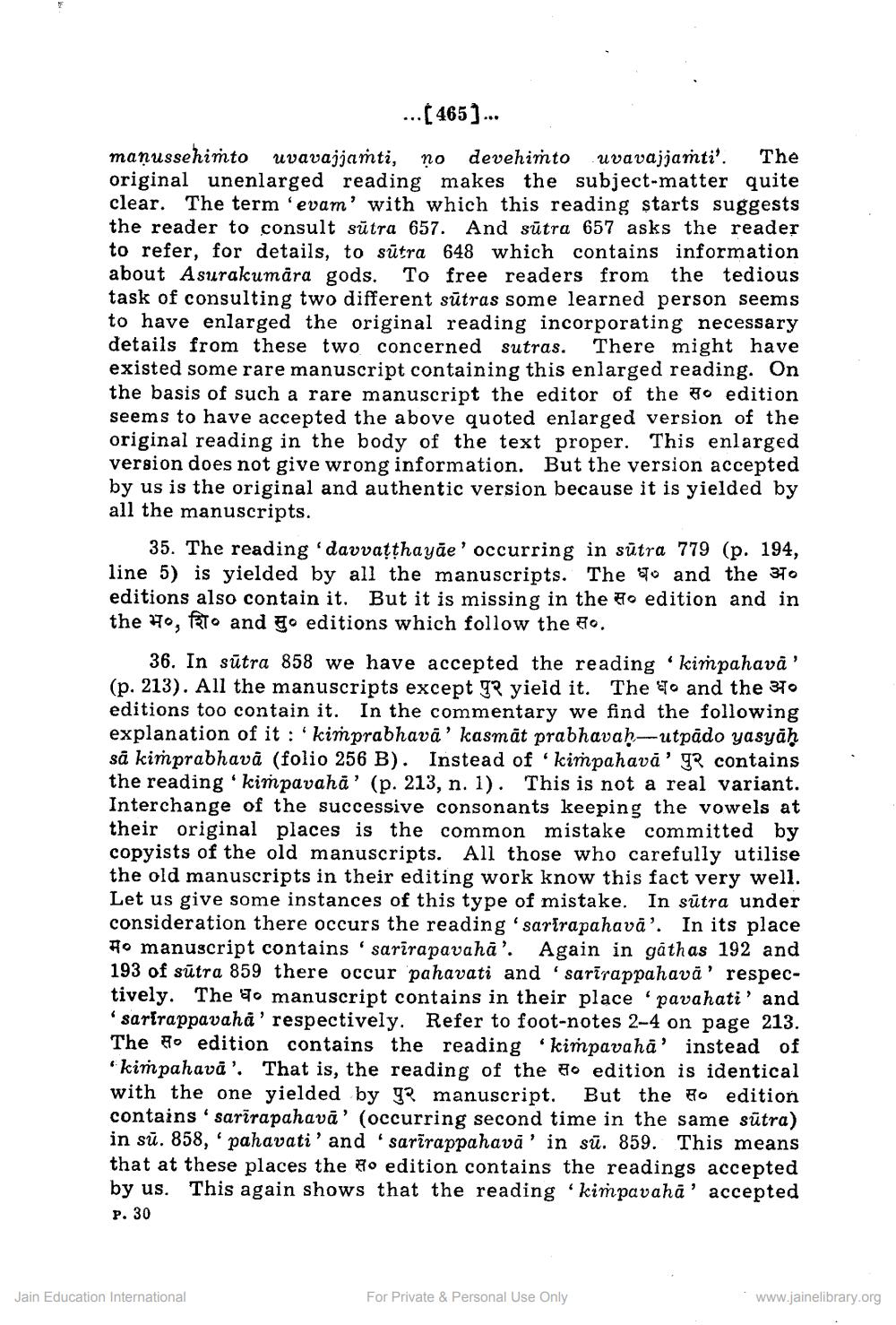________________
manussehimto uvavajjaṁti,
devehimto
uvavajjaṁti'. The original unenlarged reading makes the subject-matter quite clear. The term 'evam' with which this reading starts suggests the reader to consult sutra 657. And sutra 657 asks the reader to refer, for details, to sutra 648 which contains information about Asurakumāra gods. To free readers from the tedious task of consulting two different sutras some learned person seems to have enlarged the original reading incorporating necessary details from these two concerned sutras. There might have existed some rare manuscript containing this enlarged reading. On the basis of such a rare manuscript the editor of the edition seems to have accepted the above quoted enlarged version of the original reading in the body of the text proper. This enlarged version does not give wrong information. But the version accepted by us is the original and authentic version because it is yielded by all the manuscripts.
...[465]...
35. The reading 'davvaṭṭhayae' occurring in sutra 779 (p. 194, line 5) is yielded by all the manuscripts. The and the o editions also contain it. But it is missing in the o edition and in the Ho, and go editions which follow the .
Jain Education International
no
36. In sūtra 858 we have accepted the reading 'kimpahava' (p. 213). All the manuscripts except 9 yield it. The and the 30 editions too contain it. In the commentary we find the following explanation of it: kimprabhava' kasmāt prabhavaḥ-utpādo yasyāḥ sā kimprabhava (folio 256 B). Instead of 'kimpahavā' ? contains the reading 'kiṁpavahā' (p. 213, n. 1). This is not a real variant. Interchange of the successive consonants keeping the vowels at their original places is the common mistake committed by copyists of the old manuscripts. All those who carefully utilise the old manuscripts in their editing work know this fact very well. Let us give some instances of this type of mistake. In sutra under consideration there occurs the reading 'sarirapahava'. In its place manuscript contains sarirapavahā'. Again in gathas 192 and 193 of sutra 859 there occur pahavati and sarirappahavä' respectively. The o manuscript contains in their place 'pavahati' and 'sarirappavaha' respectively. Refer to foot-notes 2-4 on page 213. The edition contains the reading 'kimpavaha' instead of kimpahavā'. That is, the reading of the edition is identical with the one yielded by 92 manuscript. But the Ro edition contains sarirapahava' (occurring second time in the same sutra) in su. 858, pahavati' and 'sarirappahava' in su. 859. This means that at these places the o edition contains the readings accepted by us. This again shows that the reading 'kimpa vaha' accepted
"
P. 30
?
For Private & Personal Use Only
www.jainelibrary.org




